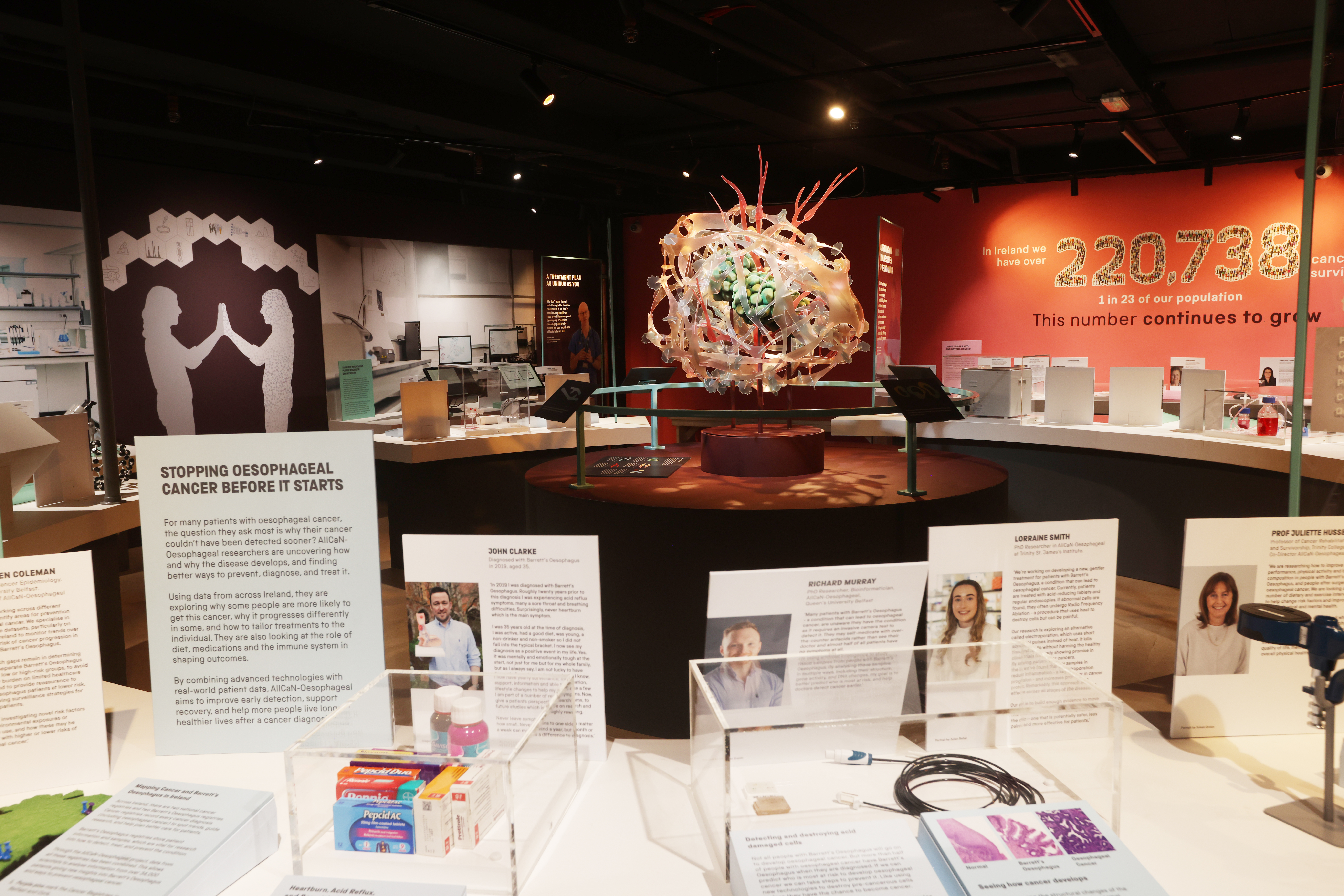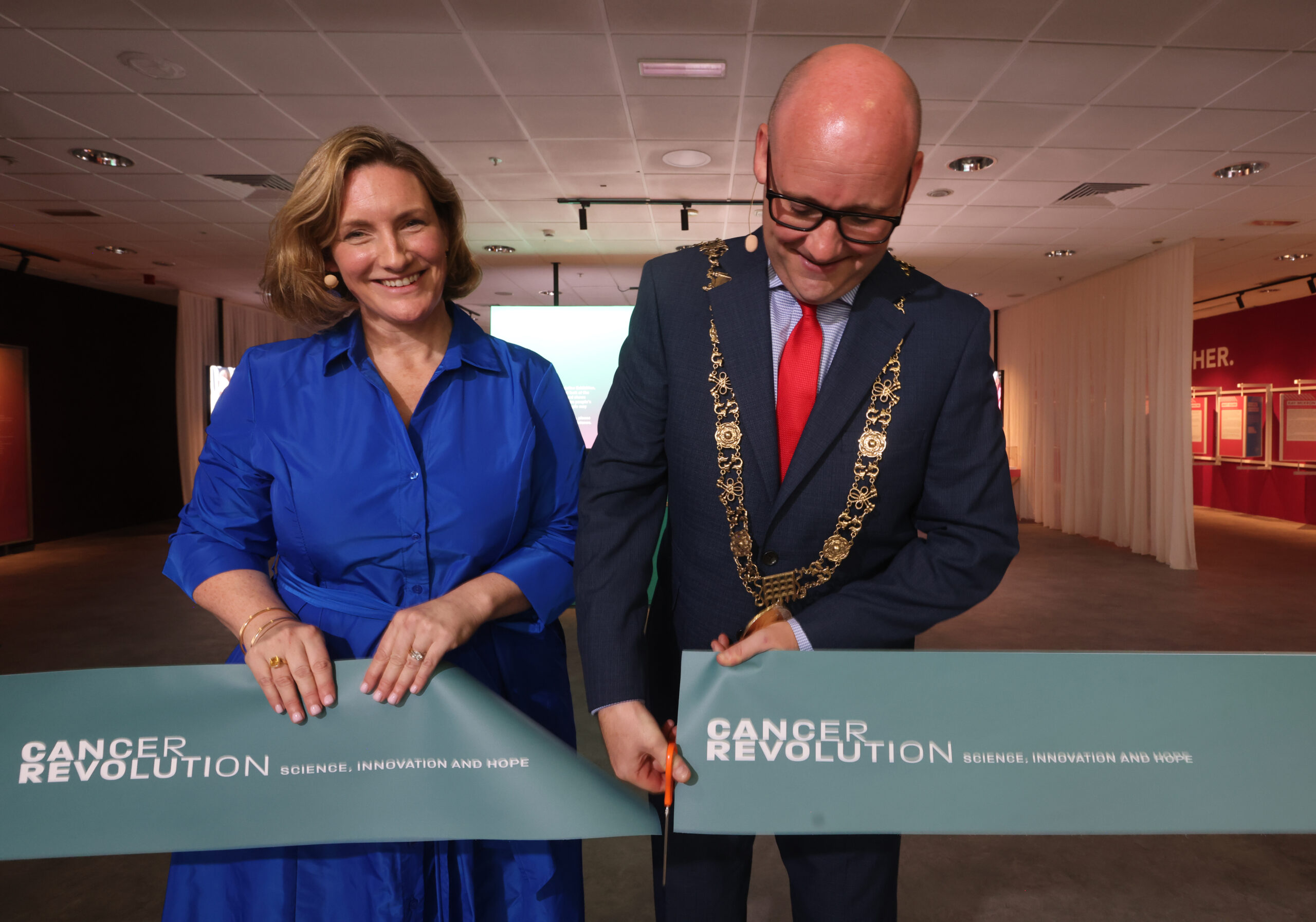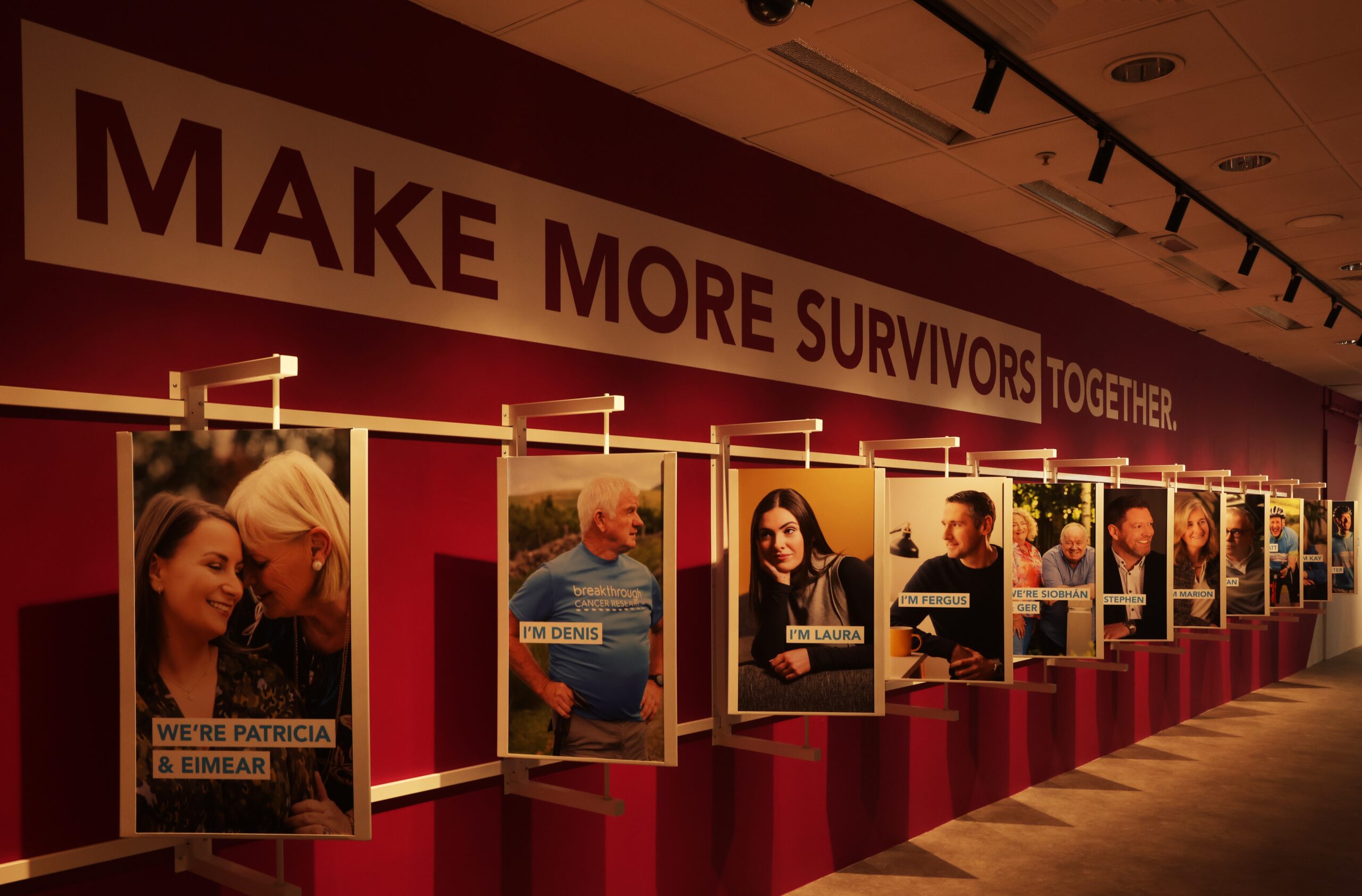In Ireland, more than 220,000 people—roughly the population of County Meath—are living after a cancer diagnosis. Two decades ago, many would not have survived. An exhibition in the heart of Dublin aims to chart the scientific advances that have driven that change.

Though cancer remains the second leading cause of death in Ireland, survival rates have improved markedly over the past two decades thanks to decades of research, innovation, and public health reform.
From 15 August to 31 October, visitors to Dublin’s Stephen’s Green Shopping Centre will be able to explore Cancer Revolution: Science, Innovation and Hope, a free exhibition that charts the evolution of cancer care from ancient times to the genomic age, opened yesterday by Dublin’s Lord Mayor, Ray McAdam.

Simply putting the exhibition in a shopping centre marks a cultural turning point. Cancer is no longer spoken of in hushed tones. It is a subject of public discourse, scientific inquiry, and increasingly, hope. Cancer Revolution captures this evolution, tracing the shift from fatalism to evidence-based management based on profound scientific insights.
Based on an exhibition developed by the Science and Industry Museum, Manchester, and the Science Museum in London, where it was seen by more than 115,000 people, it has adapted for an Irish audience with many local stories and science by Breakthrough Cancer Research.
As the exhibition makes clear, the revolution is far from over.
A Disease Older Than Humanity
The exhibition begins by exploding the myth that cancer is a modern affliction. Fossilised remains show that dinosaurs, too, suffered from tumours. Ancient Egyptian papyri describe breast cancer with chilling accuracy. Yet for most of human history, the disease was a death sentence.
That began to change with the development of modern medicine. One of the exhibition’s Irish highlights is the story of Francis Rynd, a Dublin physician who in 1844 performed a pioneering subcutaneous injection. This innovation led to the development of the hypodermic needle, now indispensable in cancer treatment.
The exhibition traces the arc of progress from such early interventions, such as the early use of radiotherapy in Dublin, to the discovery of chemotherapy in the mid-20th century, and on to today’s immunotherapies, which harness the body’s own immune system to fight the disease, and precision medicine based on genetic insights. It is a story of incremental gains and occasional leaps, driven by a global network of researchers, clinicians, and patients.
Science Meets Sentiment
What distinguishes Cancer Revolution from a conventional science exhibition is its emotional range. Alongside the microscopes and molecular models are personal artefacts: a knitted doll given to a child during treatment; a turban made by a friend during the Covid-19 pandemic; walking poles used to complete the Camino de Santiago after a diagnosis.
These objects are central to the exhibition’s thesis that science and humanity are inseparable in the fight against cancer. As Orla Dolan, CEO of Breakthrough Cancer Research, puts it: ‘Every breakthrough we pursue is driven by real stories and real lives. Let the science amaze you, let the stories move you.’
The exhibition, which she described as ‘incredibly powerful’, also features contributions from figures who are well known to the audience: Michael Flatley, the dancer and choreographer, shares a creative piece inspired by his own experiences with cancer; and Evelyn O’Rourke, a broadcaster with RTÉ, recounts her journey from diagnosis to recovery.

The Tools of Tomorrow
If the past offers perspective, the future offers promise. Among the most compelling exhibits are emerging technologies. The Cytosponge, for instance, is a sponge-on-a-string that collects cells from the oesophagus, enabling early detection of cancer without the need for endoscopy. And Professor Walter Kolch, Director of Systems Biology Ireland, is developing digital twins to personalise cancer treatments.
These innovations herald a future in which cancer is detected earlier, treated more precisely, and managed more effectively. Professor Luke O’Neill, an immunologist at Trinity College Dublin, notes that ‘science is at the forefront of transforming cancer care.’ The exhibition, he says, ‘brings that science to life’ and he hopes it will inspire the next generation of researchers.
Interactive displays allow visitors to explore the biology of tumours, distinguish between healthy and cancerous cells, and simulate treatment decisions. A 3D installation offers a visceral sense of a tumour’s complexity. These elements are designed to demystify cancer, to make it less abstract and more tangible and comprehensible.
In Search of Support
The exhibition also highlights Ireland’s National Cancer Strategy, launched in 2017, aims to reduce cancer incidence, improve survival, and enhance quality of life for patients. But implementation has been uneven, and funding remains a perennial concern.
Professor Risteárd Ó Laoide, National Director of the National Cancer Control Programme, sees the exhibition as a reckoning with both progress and unfinished business. ‘It reflects the ambition of our strategy,’ he says, ‘and the vital role we all play in continuing that momentum.’
Economics of Hope
Cancer is not just a medical challenge; it is an economic one. The cost of treatment is rising, driven by expensive new drugs and technologies. Yet the return on investment in cancer research is substantial. A 2014 study in the UK found that every £1 spent on cancer research generated £2.80 in benefits through improved health outcomes.
Breakthrough Cancer Research focuses on cancers with poor prognoses—pancreatic, oesophageal, ovarian—where investment has historically lagged. By highlighting these areas, the exhibition draws attention to the disparities within cancer care and the need for targeted funding. It also underscores the importance of international collaboration.
The original exhibition was developed with support from Cancer Research UK, and its adaptation for Ireland reflects a broader trend: the globalisation of medical science. Knowledge, like cancer, knows no borders.
Cancer Revolution: Science, Innovation and Hope runs from 15 August to 31 October 2025 at Stephen’s Green Shopping Centre in Dublin. Admission is free. See cancerrevolution.ie for more information.